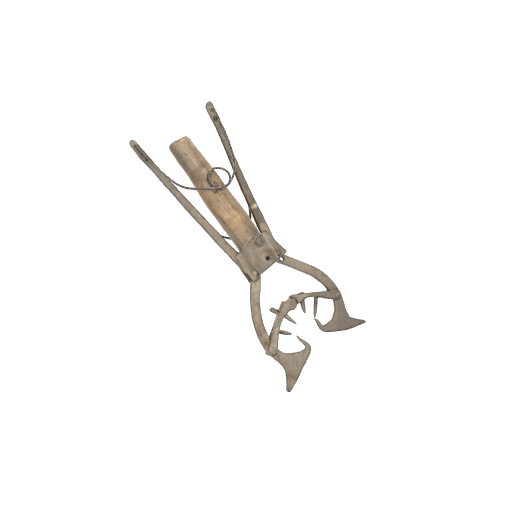Nigog
This fishing tool is traditionally used by Indigenous peoples, but this model takes advantage of new materials and technologies. It is composed of a long, wooden pole ending with two jaws between which are three metal teeth. When a fish is harpooned by the central spike, it remains trapped in the two lateral jaws of the nigog.
Many inhabitants living along the river practice fishing. Some people fish in barges, which are flat-bottomed boats, while others set up weirs on the foreshore, along the shoreline. Like the use of the nigog, weiring is a technique inherited from Indigenous peoples. It combines their creel fishing technique with European gill-net fishing. It consists of installing pikes, with or without a net, perpendicular to the shoreline. At the end of this construction is a circular structure, called the pen, in which the fish are trapped after being guided by the pikes. At low tide, the weirs’ owners harvest the fish.
In addition to diversifying the diet of the population, fishing activities provide an additional income.
References
Date: 1850–1950
Origin: North America
Owner: Forge Saint-Laurent. Saint-Anaclet-de-Lessard.
Sources:
Musées numériques Canada. (n.d.). La pêche à l’anguille sur la Côte-du-Sud [Eel fishing in the Côte-du-Sud region]. Musée de la mémoire vivante. Retrieved September 22, 2022, from https://www.histoiresdecheznous.ca/v2/la-peche-a-l-anguille_eel-fishing/histoire/les-techniques-primitives/
